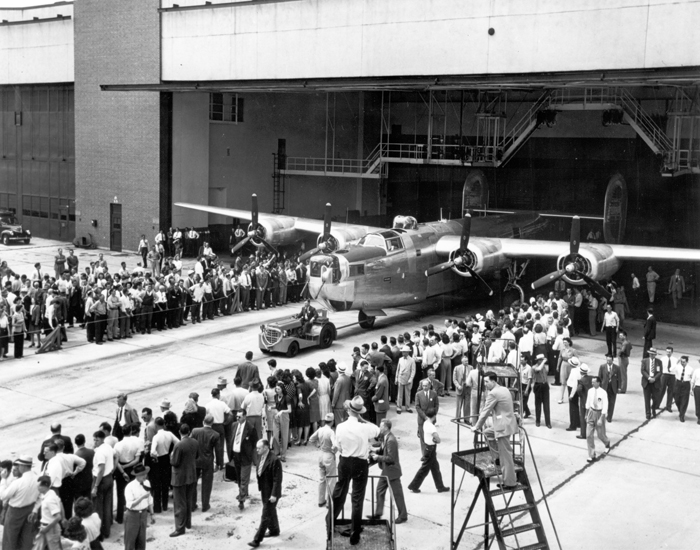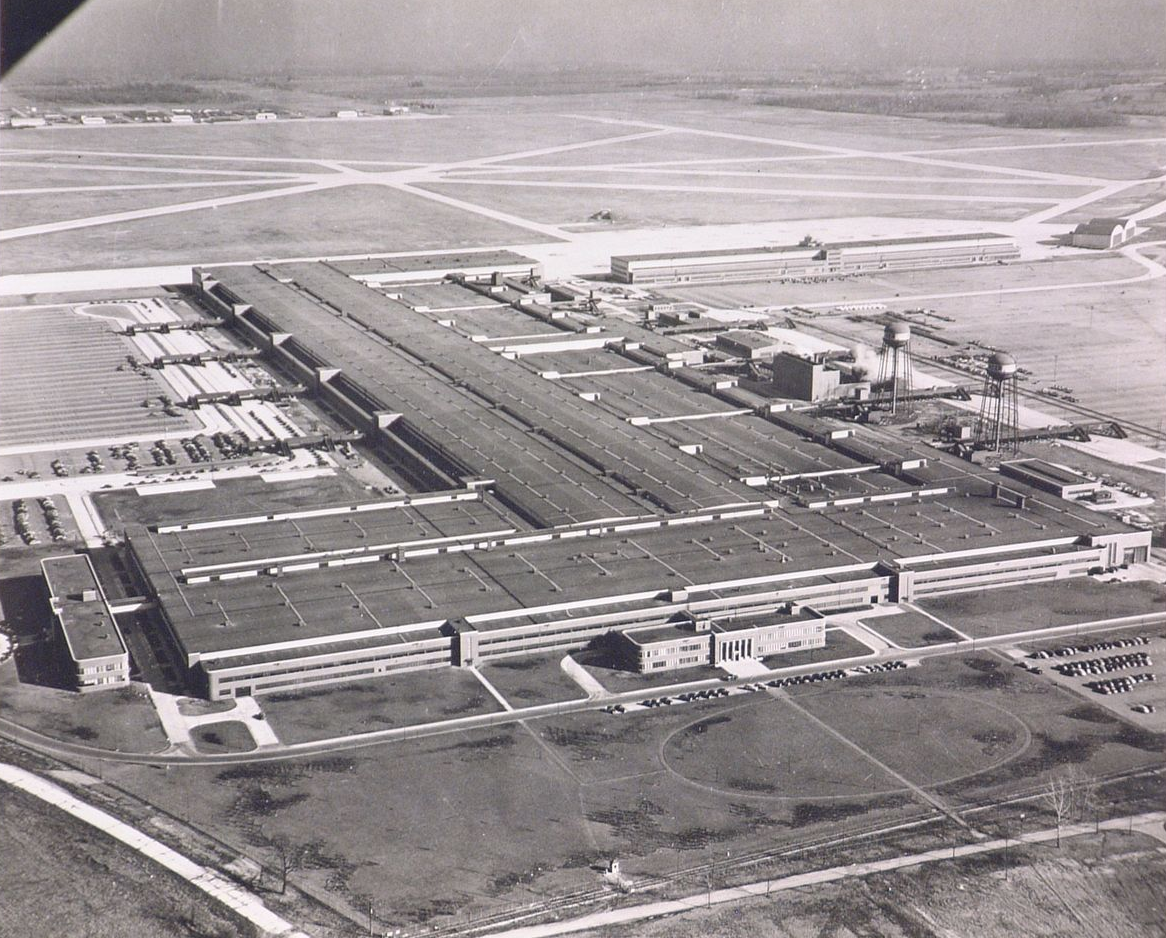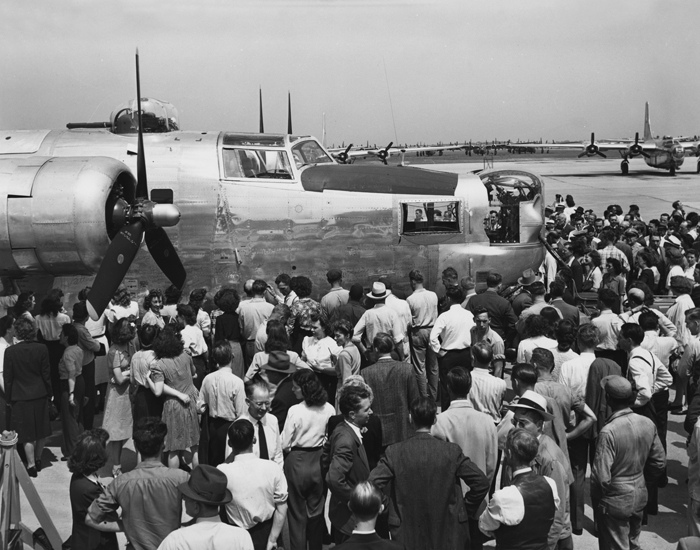
![]() 28 June 1945: The very last of 18,482 B-24 Liberator very long range heavy bombers rolled off the assembly line at Ford’s Willow Run Aircraft Plant, located between Belleville and Ypsilanti, Michigan.
28 June 1945: The very last of 18,482 B-24 Liberator very long range heavy bombers rolled off the assembly line at Ford’s Willow Run Aircraft Plant, located between Belleville and Ypsilanti, Michigan.

More B-24s were built than any other American aircraft type. They were produced by the designer, Consolidated Aircraft, at its San Diego, California and Fort Worth, Texas plants; by Douglas Aircraft at Tulsa, Oklahoma; North American Aviation at Dallas, Texas; and by Ford Willow Run.
Ford built 6,972 B-24s in 776 days and produced kits for 1,893 more to be assembled by the other manufacturers. The Willow Run plant completed a B-24 every 63 minutes.

44-51928 was flown directly to a storage facility, then later, to the Reconstruction Finance Corporation site at Kingman, Arizona, where it was scrapped.
© 2022, Bryan R. Swopes
The Willow Run Aircraft Plant/airport (YIP) is located between Belleville and Ypsilanti, Michigan. (not Bellview)
Thanks of the correction.
Fitting that it was named The HENRY FORD!!
https://web.archive.org/web/20171224043631/http://www.b24bestweb.com:80/Pics-H-HEN-HH.htm
Any idea what happened to this aircraft after the war?
Paul, The Final B-24 was immediately flown to a storage facility, and then on to Kingman, Arizona, where it was scrapped. This was the fate of HUNDREDS of BRAND-NEW B-24s toward the end of the War.
I wonder if it was immediately scrapped
Very soon after.
if I recall correctly there some planes P-47s or maybe P-40s that were flown to be scrapped immediately after production due to the end of the war and the fact that they couldn’t shut the factories down very quickly. Like the B-24 they were already obsolete coming off the line.
Totally Amazing!
One bomber every 63 minutes!
There is an interesting documentary about Willow Run and the B-24s they built there on YouTube: https://www.youtube.com/watch?v=p2zukteYbGQ
Interesting-according to Wikipedia Ford had started to build single tail N models in May yet the final produced plane was obviously an M.
Ford had switched over to the single-tailed B-24N in May 1945, but the end of the war in Europe in the same month brought a rapid end to Liberator production; the contract with Ford was officially terminated on 31 May 1945 and orders for 5168 unbuilt B-24N-FO bombers were cancelled as well. The delivery of seven YB-24Ns by Ford in June 1945 marked the end of Liberator production at Willow Run.
I was thinking the same thing… every 63 minutes is astounding !!!
I see two B-24Ns in the background of the last shot. Perhaps this M model was to fulfill a previous subcontract or simply paused while the later versions were completed and then built to clear the production line since it was too far along to be broken up?
Yankee Air Museum saved the end portion where the completed bombers rolled out.
The plan is to move the museum in after fundraising and rehab are completed. Sadly out of all the bombers built there there are only four left and none are available for the museum.
Since the B-24 was superior to the B-17 I wonder why it was second in popularity.
Maybe the Memphis Bell.
Someone said the B-17 had a better Public Relations Agent. I also suppose there was the impression @ time the B-17 had better combat survival characteristics.
My Uncle picked a B-24 at Willow Run and flew it to Europe and flew Liberators in combat ’til the end of ETO ops. He was a loyal Ford customer, the rest of his life.
The last sentence has a typo (recontstruction) unless that was the name of the entity.
Thanks, Eric. I fixed it.